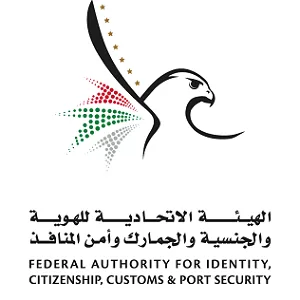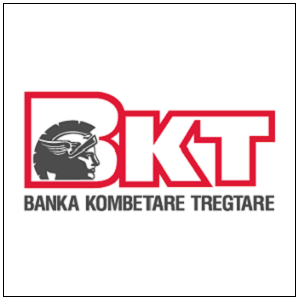Technology
Who Governs the Internet? The U.S.-EU Clash Over Big Tech Regulation

- The ongoing regulatory clashes between the U.S. and the EU are shaking up the global functioning of digital platforms. Implications of such policies will fall directly on companies and consumers.
- Corporations in every sector have to adjust to the very wide compliance rules being worked out to cooperate or else risk losing visibility, competitiveness, and legal certainty in key international markets.
Disputes between Washington and Brussels on the determination of Big Tech governance have not been a purely regulatory debate. It carries a deep ideological strife between two world powers competing to set forth the diktat of the digital future. As the tech platforms influence all spheres of the economy, politics, and individual life, this war is for prominence rather than for data.
The U.S.-style way of perceiving its tech giants, Apple, Meta, Amazon, or Google, is as corporate entities and simultaneously as tools of national interest. The EU sees them as unregulated monopolies that need to be checked by public authorities, guaranteeing a fair marketplace for all digital traders. This friction has come to a head with the implementation of Europe’s Digital Markets Act (DMA) and Digital Services Act (DSA), which together represent the most aggressive tech regulation in the world.
As the EU tightens the leash on tech platforms, the U.S. pushes back. What unfolds next will not only shape regulatory frameworks but dictate how brands operate, how consumers engage, and where innovation flourishes.
What’s Going On?
Over the past year, the European Union began enforcing the DMA and DSA, landmark legislative packages designed to establish rules for companies that dominate the digital economy. These rules force companies to alter everything from ad targeting and platform algorithms to app distribution and default search settings.
The U.S. government responded by claiming these rules unfairly target American companies. The Office of the U.S. Trade Representative has escalated the dispute to the World Trade Organisation, accusing the EU of violating international trade norms.
This isn’t simply about regulation. It’s about competing visions of digital sovereignty. The EU aims to assert regulatory control over its market regardless of company origin. The U.S. wants to protect its economic interests and defend its tech leadership.
The EU’s Approach to Tech Power
Rather than wait for harmful outcomes, the EU acts proactively. The DMA is targeting firms with at least 45 million monthly EU users and €7.5 billion in annual EU revenue. These so-called “gatekeepers” must meet strict rules around fairness, interoperability, and transparency.
Google’s preferential treatment of its services in search results is now banned. Meta must allow users to use WhatsApp and Messenger without linking to Facebook. Apple must permit third-party app stores and payment systems on iOS devices.
Margrethe Vestager, the EU’s Competition Commissioner, said, “If a company has the power of a gatekeeper, it must act like one with responsibility.”
The DSA complements this by focusing on user safety and content accountability. Platforms must disclose how algorithms work, how ads are personalised, and what steps they take to moderate harmful content. This places a high compliance burden on firms operating in the EU digital space.
The U.S. Reaction: Legal Tools and Diplomatic Pushback
In contrast, the U.S. has avoided blanket rules. It prefers targeted enforcement, relying on court actions by the Department of Justice and the Federal Trade Commission. Ongoing antitrust lawsuits against Google, Meta, and Amazon are rooted in proving harm after it occurs.
Critics say this approach is too slow to address the systemic power imbalance. Proponents argue it offers flexibility and avoids overregulation. The U.S. Chamber of Commerce and tech lobbies argue that the EU’s rules create uneven playing fields that disproportionately impact American firms.
Earlier this year, U.S. Trade Representative Katherine Tai stated, “We must ensure that regulation does not become protectionism.” The WTO case now underway could shape future international digital trade rules.
Implications for Global Brands
Whether or not your brand is based in the U.S. or the EU, the fallout from this regulatory battle will impact your digital operations. Online platforms dictate the infrastructure of modern marketing, app distribution, e-commerce, and analytics.
Meta’s compliance with the DSA has reduced the precision of ad targeting across Instagram and Facebook in the EU. Businesses depending on narrow interest-based ads have seen cost-per-click increase by up to 18%, according to industry data.
Apple’s changes to its App Store under the DMA are forcing developers to create parallel app experiences, often with alternative payment systems. While this avoids Apple’s 30% commission, it demands new investment in fraud protection and compliance.
Google is also revamping its search algorithms for EU users to ensure neutrality, significantly altering how businesses gain visibility in organic results. Brands that once relied on ranking via association with Google Maps or Shopping will now need SEO strategies that do not depend on Google’s ecosystem prioritisation.
Global marketing teams must now segment campaigns and infrastructure based on regulatory geography. The EU is no longer just a market—it’s a unique regulatory environment.
What This Means for Consumers Around the Globe
While these laws are European in origin, their impact travels beyond the continent. Consumers in Asia, Africa, and the Americas are already experiencing ripple effects in how they interact with tech platforms.
Ads are becoming less invasive. Apps now offer more consent prompts and clearer explanations of how personal data is used. In-app purchases may cost less as companies skip Apple’s or Google’s platform fees. Privacy dashboards are more common and more detailed.
Spotify users in Europe now have the option to purchase subscriptions within the app without Apple’s surcharge. As companies adapt systems to comply with the DMA, these user benefits are likely to reach other markets as well, either due to operational consistency or local regulatory pressure.
India, Brazil, South Korea, and Australia are already exploring laws modelled on the EU’s framework. That means features being tested in Europe could become the default elsewhere.
The way consumers browse, buy, and communicate online is being reengineered—in real time.
Is the EU Setting a New Global Standard?
Policymakers from multiple countries are referencing the DMA and DSA as foundational blueprints for their reforms. Australia’s ACCC has mirrored sections of the DMA in its investigations into app stores. India’s draft Digital Competition Act draws heavily from the EU playbook.
South Korea, which passed app store legislation in 2023, cited Europe’s laws as justification for banning mandatory use of platform billing systems. Brazil is considering transparency mandates on online advertising similar to those in the DSA.
For brands, this means preparing for a world where region-specific compliance is the rule, not the exception. Adopting EU standards early could become a competitive advantage, offering a future-proof template for other jurisdictions.
Case Study: Apple and the DMA
When the EU designated Apple as a gatekeeper, the company responded by allowing sideloading and third-party payment systems—but only within EU countries. This affects around 100 million iPhone users.
Developers like Epic Games and Spotify have welcomed the change. Spotify now allows EU customers to subscribe from within the app using non-Apple payment options, avoiding platform fees that previously reached 30%.
Yet Apple has implemented new compliance steps that developers must follow, such as notarization checks and independent audits. While the rules promise greater flexibility, they also require brands to be more technically and legally prepared.
Trade Diplomacy and Data Transfer Risks
This battle also spilt into diplomatic trade affairs. Alas, in January 2025, the U.S. formally filed a WTO dispute against the DMA, alleging discrimination against U.S. companies. A ruling is scheduled for late this year.
Meanwhile, apprehensions concerning the transfer of data across frontiers continue to abound. The previous EU-U.S. agreement—Privacy Shield—was invalidated by the European Court of Justice in 2020, and now its successor, the Trans-Atlantic Data Privacy Framework, is facing a legal challenge.
Brands using cloud-based services involving customer profiling or behavioural analytics have to consider alternatives such as regional data hosting or data anonymisation to reduce their exposure.
Strategic Steps for Global Businesses
Now is the time to act. Businesses should begin by assessing their exposure to regulatory shifts:
- Audit your tech stack and identify dependencies on gatekeeper platforms
- Localise compliance frameworks for EU digital operations
- Reevaluate reliance on third-party data and recommit to first-party data strategies
- Invest in legal counsel across data privacy, antitrust, and digital commerce
- Design infrastructure that allows agile pivots across regulatory zones
Those who prepare now will be more resilient, more compliant, and more adaptable.
The Legal Landscape Ahead
More lawsuits are coming. Apple and Meta are contesting multiple DMA provisions in EU courts. Amazon and Google are adjusting operations more cautiously. Microsoft, having avoided major penalties so far, has remained relatively cooperative.
This legal uncertainty shouldn’t delay your compliance. Most core obligations are implemented, with rolling deadlines continuing until 2025. Any brand that waits will be left behind.
What to Expect in 2025
Key dates to mark:
- January 2025: Full DMA compliance deadline for designated gatekeepers
- March 2025: DSA rules kick in for all mid-sized platforms
- Summer 2025: WTO ruling on U.S. trade complaint
Governments, platforms, and brands alike are navigating this regulatory shift. The digital rulebook is being rewritten. Every stakeholder should be reading carefully.
The Bigger Question: Who Sets the Rules?
The future of global tech governance will likely be shaped not by one country but by the convergence—or conflict—of regulatory frameworks.
As for brands, they must track many systems, embed compliance into the core business operations, and treat regulation as an opportunity, rather than as a legal nuisance.
Stakeholders involved will be the ones affected throughout the process, and the winners will be those able to build trust, adapt fast, and operate seamlessly cross-border.
Final Thought
Digital regulation is now a frontline issue for global businesses. Whether the EU or the U.S. gains the upper hand in setting standards, your responsibility remains the same: be informed, be agile, and be prepared to operate compliantly in a multi-regulatory world.
Start making those adjustments today, before the rules leave your brand behind.























































